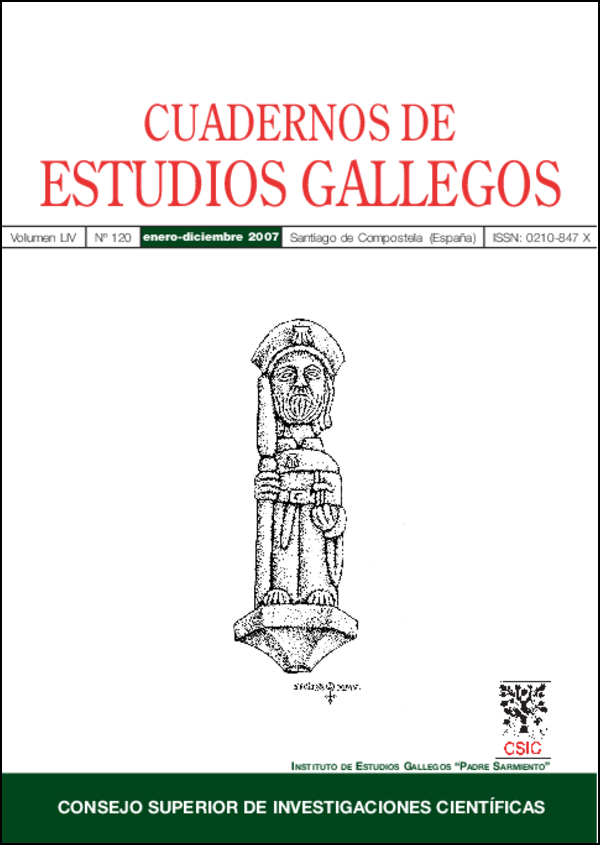San Adrián de Moneixas. Evolución de la iglesia y estudio de su singular pintura mural
DOI:
https://doi.org/10.3989/ceg.2007.v54.i120.30Keywords:
Church, altarpiece, mural painting, Flagellation of ChristAbstract
The church of Saint Adrian of Moneixas (Lalín – Pontevedra) was originally a Romanic factory dated about 1170. From that time, it only keeps the arch leading to the High Chapel and the columns on which the arch rests. The columns end in decorated capitals. Between the second and third quarter of the eighteenth century the church suffered several reparations, and it was provided with a sacristy, a window in the apse, two new chapels, the main altarpiece and other three retables and the bell gable -all of them in baroque style. In 1960 the church is completely transformed - a Sanctuary-Chapel was built as if it was a second nave, and it was dedicated to the Third Carmelite Order. Inside the wall of the apse epistle and because of some works, there appeared an original mural painting, unknown up to now. We think that it can be dated as belonging to the late fifteenth century or very early in the sixteenth. It represents the Flagellation of Christ, with the particularity that it follows an unusual pattern in Spain taken from the Speculum Humanae Salvationis, in which Christ appears tied to a palm tree while two men belonging to the brotherhood of the “executioners” “sayones” are whipping him.
Downloads
Downloads
Published
How to Cite
Issue
Section
License
Copyright (c) 2007 Consejo Superior de Investigaciones Científicas (CSIC)

This work is licensed under a Creative Commons Attribution 4.0 International License.
© CSIC. Manuscripts published in both the print and online versions of this journal are the property of the Consejo Superior de Investigaciones Científicas, and quoting this source is a requirement for any partial or full reproduction.
All contents of this electronic edition, except where otherwise noted, are distributed under a Creative Commons Attribution 4.0 International (CC BY 4.0) licence. You may read here the basic information and the legal text of the licence. The indication of the CC BY 4.0 licence must be expressly stated in this way when necessary.
Self-archiving in repositories, personal webpages or similar, of any version other than the final version of the work produced by the publisher, is not allowed.















